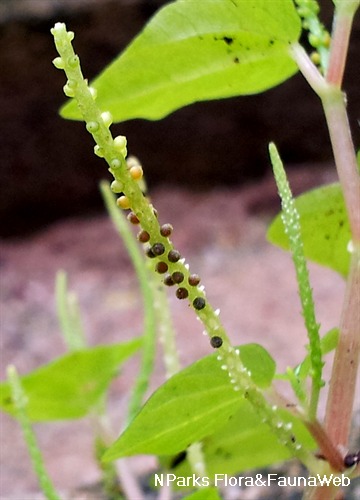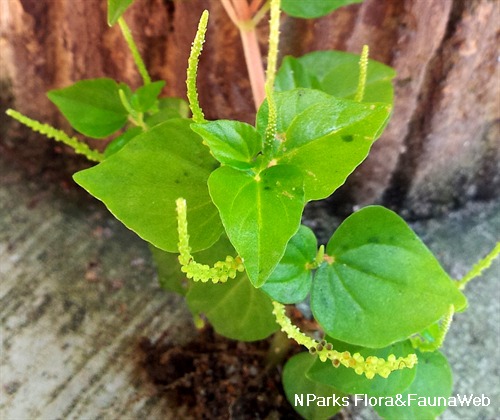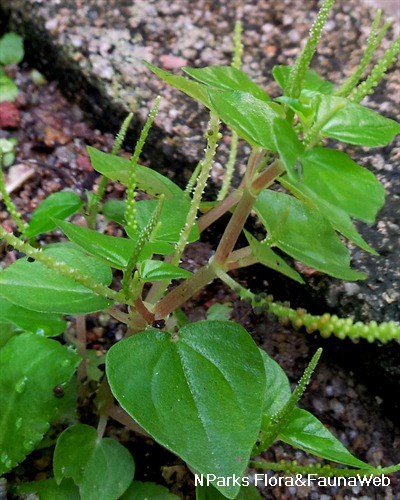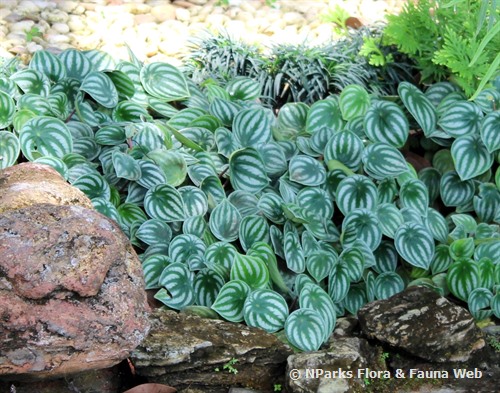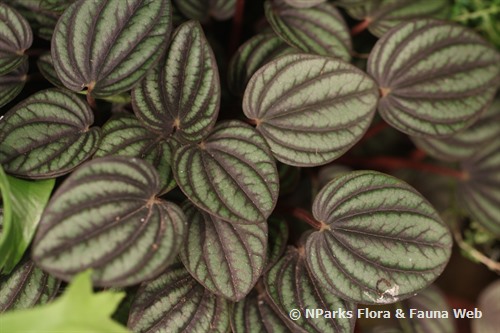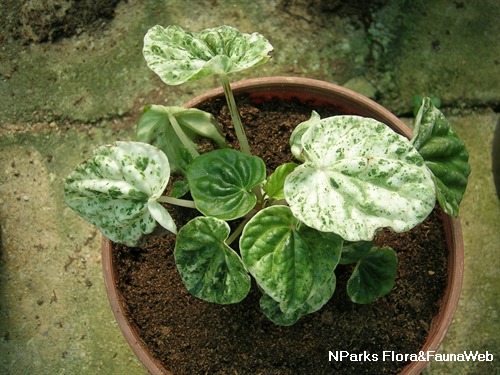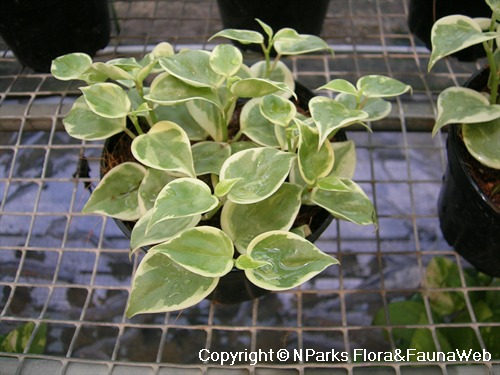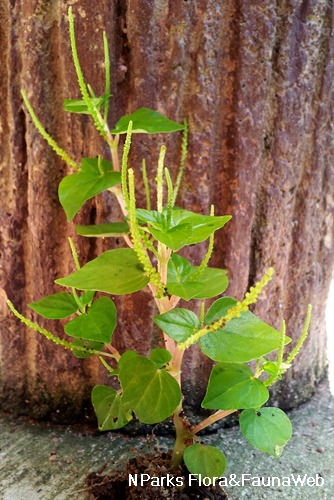
Back
Peperomia pellucida (L.) Kunth
| Family Name: | Piperaceae |
| Synonyms: | Peperomia ephemera |
| Common Name: | Shiny bush, pepper elder, 草胡椒, 透明草 |
Name
Classifications and Characteristics
| Plant Division | Angiosperms (Flowering Seed Plants) (Dicotyledon) |
|---|---|
| Plant Growth Form | Herbaceous Plant |
| Lifespan (in Singapore) | Perennial |
| Mode of Nutrition | Autotrophic |
Biogeography
| Native Distribution | Tropical North and South America |
|---|---|
| Native Habitat | Terrestrial (Inland Cliff) |
| Preferred Climate Zone | Tropical |
| Local Conservation Status | Non-native (Spontaneous (Naturalised)) |
Description and Ethnobotany
| Growth Form | Annual herb up to 0.4 m tall. |
|---|---|
| Foliage | Leaves are broadly ovate (egg-shaped) or ovate-triangular (1-3.5 cm long, 1-3.5 cm wide). |
| Stems | Branched, hairless stems are erect or rising upwards. |
| Flowers | Tiny flowers are loosely arranged in a hairless, spike inflorescence (2-6 cm long). The flowers are surrounded by round bracts. |
| Fruit | Dry, indehiscent fruits are known as nutlets. They are round and about 0.5 mm wide. |
| Habitat | Occurs in forests and cliffs on wet soils. |
| Ethnobotanical Uses | Food (Fruit or Vegetable) Medicinal: In Indonesian folk medicine, bruised leaves are applied to the head to relieve headache during fever. The juice obtained from the leaves is taken for abdominal pain and colic. In the Philippines, the plant is applied as a poultice for abscesses and boils. In India, a whole plant decoction (crushed plant material boiled in water) is taken to stop bleeding. In Brazil, it is used to lower cholesterol and treat infections. This plant was shown to have anti-inflammatory activity and provided pain relief in rats and mice. |
Plant Care and Propagation
| Light Preference | Semi-Shade, Full Shade |
|---|---|
| Water Preference | Moderate Water |
| Plant Growth Rate | Fast |
| Maintenance Requirements | Low |
| Diseases | The plant is a host of mealy bugs and the leaves are often eaten by slugs. |
| Pest(s) | Sucking Insects |
| Propagation Method | Seed, Stem Cutting |
Foliar
| Mature Foliage Colour(s) | Green |
|---|---|
| Mature Foliage Texture(s) | Smooth, Glossy / Shiny |
| Prominent Young Flush Colour(s) | Green |
| Young Flush Texture(s) | Smooth, Glossy / Shiny |
| Foliar Type | Simple / Unifoliate |
| Foliar Arrangement Along Stem | Alternate |
| Foliar Attachment to Stem | Petiolate |
| Foliar Shape(s) | Non-Palm Foliage (Ovate) |
| Foliar Venation | Palmate |
| Foliar Margin | Entire |
| Foliar Apex - Tip | Acute, Obtuse |
| Foliar Base | Rounded / Obtuse, Cordate |
Floral (Angiosperm)
| Flower & Plant Sexuality | Bisexual Flowers |
| Flower Colour(s) | Cream / Off-White |
|---|---|
| Flower Grouping | Cluster / Inflorescence |
| Flower Location | Terminal |
| Inflorescence Type | Spike |
| Flowering Period | Free-Flowering |
Fruit, Seed and Spore
| Mature Fruit Colour(s) | Black |
|---|---|
| Seed Quantity Per Fruit | Few (1-5) |
Image Repository
Others
| Master ID | 31163 |
|---|---|
| Species ID | 5557 |
| Flora Disclaimer | The information in this website has been compiled from reliable sources, such as reference works on medicinal plants. It is not a substitute for medical advice or treatment and NParks does not purport to provide any medical advice. Readers should always consult his/her physician before using or consuming a plant for medicinal purposes. |

